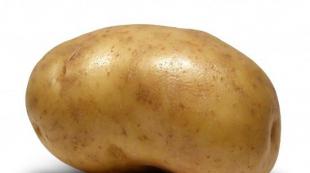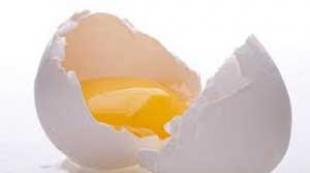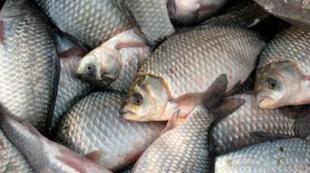Fertilizing vegetables with ammonia. Ways to use ammonia in the garden and garden
Many gardeners have heard how useful ammonia is, the use of this tool in the garden will help not only restore soil fertility, but also protect plants from many pests. We will tell you why the use of ammonia is necessary, how it affects crops and in what proportions to use it.

The benefits and uses of ammonia in the garden
What is the function of ammonia in the cultivation of the land? Let's think logically. Again, it is known from the school curriculum that for good growth and favorable development, all plants without exception need nitrogen. Despite the fact that the air contains 78% of free nitrogen, plants are able to absorb this component from the soil only as part of chemical compounds. Therefore, the use of ammonia in horticulture for watering various cultivated plants and flowers saturates them with a substance that is so necessary for the growth of development. In addition, ammonia is used to spray plants: horticultural crops, shrubs, flowers and trees as pest control. Onion fly, ants, bear, aphids, secretive proboscis do not tolerate a strong ammonia smell and leave their favorite habitats.
What plants can be fertilized with ammonia
The life cycle of any plant is associated with the process of increasing green mass, flowering, and the formation of fruits. Nitrogen types of fertilizers help him make development efficient. The need for nitrogen in all plants is different.
Among them there are great lovers of nitrogen, feeding with ammonia is most useful for them:
- Cabbage.
- Eggplant.
- Pumpkins, zucchini.
- Rhubarb.
- Peppers, potatoes.
- Perennial bulbous flowers.
- Peonies, dahlias, clematis.
- Raspberry, cherry, plum, strawberry, blackberry.
It is useful to feed any seedlings with an alcohol solution during the growth of the house, when transplanting to a permanent place.
Feeding cucumbers with ammonia
Ammonia, whose use in the garden is known not only for pest control, can serve excellent feeding for cucumbers. It is this plant that needs a lot of nitrogen. To do this, three tablespoons of ammonia are taken per ten liters of water. Cucumbers are poured with the resulting solution immediately after the start of shoot growth.

Processing cabbage with ammonia
Ammonia is known to have beneficial effects on many plants. So, ammonia, the use of which in the garden no longer causes any controversy among summer residents, is also useful for cabbage. It not only saturates it with essential trace elements, but also effectively fights pests. For example, this drug is a malicious enemy of slugs, snails, fleas, caterpillars and the well-known cabbage fly. In order to process cabbage, you need to take ten liters of water and 80-100 milliliters of ammonia. The resulting solution should be sprayed with plants every few days. But if the slugs are already wound up, then the solution can be poured directly from the watering can onto the head of cabbage. The pests should leave your garden soon.

Processing onions with ammonia
The benefits of this drug for onions have been noticed for a long time, so ammonia is actively used to improve crop growth and increase its yield.
The use of nitrogenous fertilizers stimulates the rapid growth of green mass. For onions grown on greens, this will be an excellent top dressing. The feather of such plants becomes juicy, green, beautiful.
The introduction of certain norms of nitrogen significantly affects the development of the underground part of the onion, the main thing at the same time is to prevent an excess of nitrogen, and also not to forget about other elements (potassium, phosphorus).
If everything is done on time and in the right proportions, then the onion heads will be juicy, large. Along with onions, it absorbs such nitrogenous compounds and garlic very well, it is no coincidence that these crops are most often fed with this pharmaceutical preparation.

Feeding garlic with ammonia
Top dressing with ammonia is carried out if the tips of the garlic leaves become thinner, begin to twist and turn yellow. To do this, prepare a low concentrated solution: 2 tablespoons of ammonia water per 10 liters of water.
They use ammonia from pests in the garden, namely, they carry out foliar treatment from weevils. To combat them, 25 ml of ammonia is added to a bucket of water, the beds are watered with a ready-made solution every few days.
Processing a tomato with ammonia
Tomatoes, the culture is widespread. Each summer resident plants his favorite varieties to pamper with homemade salads, tomato juice and preparations. The crop ripens on the aerial part of the plant, so a strong bush - necessary condition. Tomatoes need nitrogen to grow properly. You can feed tomatoes with a useful element using ordinary ammonia from the pharmacy chain.
The effect of the use of ammonia in the form of top dressing for tomatoes is very noticeable. The substance in ammonia is in a form that is easily digestible for plants and does not require additional processing by bacteria. After proper feeding with ammonia, tomatoes in the beds:
- increase the green mass;
- bloom actively;
- are not subject to pest invasions;
- do not suffer from fungal diseases.
Ammonia for indoor flowers
AT winter period our indoor flowers that grow on windowsills, where it can be cold or drafty, or vice versa too hot due to heating, the flowers feel pretty bad. Therefore, they need to be fed, especially in the second half of winter. In addition, whiteflies can start in indoor flowers, spider mite or other pests. Therefore, for disinfection and fertilizing with nitrogen, you need to make a soft, delicate solution using ammonia.
Excess nitrogen can burn the roots of plants, so you need to water with such solutions stepping back from the roots of indoor flowers, and other plants, especially shrubs.
For indoor flowers, we breed 1 tbsp. a spoonful of ammonia in a bucket of water. The solution is very weak and gentle. But this is quite enough for watering, fertilizing and disinfection. Then we water the flowers with ammonia with this solution so that pests do not multiply there, and at the same time disinfection from pests is obtained.
Nitrogenous fertilizers quickly reach the roots indoor plants they grow faster.
Also make the solution stronger and wash the windows with this solution, where there are indoor flowers. Pests may be there. Indoor flowers respond well to such top dressing.

Safety measures when treating plants with ammonia
The pungent smell of ammonia and its vapor, if elementary protective measures are not followed, can be dangerous:
- sudden inhalation can cause respiratory arrest, so it is better to mix the solutions in well-ventilated areas;
- in people suffering from hypertension, it can cause a sharp increase in pressure;
- ammonia is a medicinal product and in no case should it be mixed with chlorine-containing substances;
- in order to avoid burns, be careful not to get the product on the skin and mucous membranes.
With proper use, respect for proportions and rules, ammonia will become your indispensable helper and friend for plants. They will certainly thank you healthy appearance and a rich harvest.
Many people use ammonia in the garden, the use of which is justified in several ways, so it is an excellent fertilizer and substance to cope with pests. It is important to know the rules for using this tool so as not to harm the plants.
The benefits of ammonia in the garden
Gardeners have long used ammonia as an affordable means to kill pests, as well as a fertilizer that is easily digested. ammonia - alcohol solution ammonia, in which nitrogen is present in the form of ammonium nitrate. Ammonia in the garden has the following advantages:
- This substance is safe, so there will be no traces of nitrates in the crop and the fruits will not suffer in any way.
- Ammonia is an affordable remedy that can be purchased at any pharmacy.
- The substance is volatile, so "overfeeding" is almost impossible, and it is much easier to monitor the level of nitrogen nutrition.
- Pest control. A pronounced smell that repels insects, protecting crops from their negative influence.
- Soil reclamation. beneficial effect microorganisms that are found in poor soil, weakens. To improve their activity, organic additives are used, the decomposition process of which takes several years. Ammonia will cope with the task much faster.
- top dressing. Ammonia contains nitrogen, so it is used as a fertilizer for the rapid growth and development of crops. When fertilizing, substances do not accumulate in parts of the plant.
- Prevention of soil acidification. Ammonia is an alkali of medium strength, so when it is introduced, you can forget about the frequent liming of the soil. It should be applied after the acid reaction has been confirmed.
Ammonia in the garden - application from pests
Ammonia has a strong and pungent odor that irritates many pests, scaring them away. Processing the garden with ammonia helps to cope with such pests: ants, bears, aphids, wireworms, flies, slugs, and so on. There is a universal recipe that helps fight most insects:
- Mix 1 teaspoon of fir oil and iodine, 2 tbsp. tablespoons of ammonia and birch tar, and also put 1/2 teaspoon of boric acid, which must first be diluted in 0.5 tbsp. boiling water. Dilute all this in 10 liters of water.
- To spray, take 1 tbsp. to a bucket of water. If after the procedure there is no result, then repeat it in a week.

Ammonia against ants in the garden
Small insects can cause a lot of problems, but ammonia will help to quickly deal with them. The use of ammonia in the ant garden is based on two procedures:
- First you need to get rid of the anthill and for this it should be filled with a special solution, for which add 2 tbsp to 5 liters of water. spoons of ammonia Another anthill can be covered with a cloth soaked in ammonia, and covered with a film on top.
- Ammonia in the garden, the use of which is effective, is also suitable for processing plants. Mix 10 liters of water and 10 ml of ammonia, and then irrigate under the root with the finished solution. If you want to spray, then add 3-4 tbsp. spoons of sugar and stir until dissolved.
Ammonia in the garden - application from aphids
One of the most effective means against this pest - ammonia. With it, you can protect different plants, trees and bushes. It is allowed to use the product at home, if the smell is not very embarrassing. The use of ammonia in the garden is carried out according to the following scheme:
- To prepare the product, you should take 5 ml of ammonia for every 1 liter of water.
- Prepare a soap base that will ensure the product sticks to the leaves. To prepare it, grind a bar of soap using a grater, and then dissolve it in 1 liter of warm water.
- Mix two liquids to end up with 10 liters of working solution. Use a watering can to water the plants. The frequency of application depends on the infestation, but in most cases 1 time in 14 days is enough.
Ammonia against a bear in the garden
A dangerous insect that can quickly spoil shoots, seedlings and root crops is afraid of ammonia because of its pungent odor. There are two options for using ammonia in the garden:
- Use the drug in concentrated form. To do this, the beds should be laid out rags soaked in ammonia. If there are holes, then it is better to close them with them. To keep the smell for a long time, put the rags in a bag and poke a few holes in it.
- Ammonia in the garden, the use of which must take place according to the rules, can be used in the form of a solution. It is important to strictly observe the dose. In a bucket of water, add 10 ml or 3 tbsp. spoons of ammonia Pour the finished liquid between the rows or near the seedlings, making sure that the solution does not fall on the plant itself.

Ammonia in the garden from slugs
These pests love different garden crops that affect leaves, flowers and fruits. The use of ammonia in the garden, the use of which is justified by its effectiveness, is carried out as follows:
- Take 40 ml of ammonia and add to 5 liters of water. The finished solution should be filled with cracks in the ground. For better efficiency, you can sprinkle the ground with superphosphate.
- You can use ammonia against pests in the garden as a spray. To do this, add 4 tbsp to a bucket of water. spoons of ammonia, but with a concentration of 10%. Spray with the finished solution.
How to fertilize the garden with ammonia?
The solution can be an excellent top dressing for garden crops, because at a concentration of 10%, it contains 80-82% nitrogen, which is useful for plants, since it promotes the formation of chlorophylls. The substance is in an easily digestible form, which distinguishes it from other nitrogen supplements. If you are interested in what you can water with ammonia in the garden, then this applies to many crops, both vegetable and fruit.
There are certain signs by which you can determine the presence of nitrogen starvation, for example, they include:
- the stems are thinner and easily damaged;
- the leaves have become small;
- yellowing of the leaves below;
- stunting, lack of flowers and falling ovaries;
- increased impact of frost on trees and shrubs.
Ammonia in the garden - use for strawberries
Thanks to this top dressing, the roots, stems and leaves of this crop begin to grow more intensively. This fertilizer is especially useful for remontant varieties. Use ammonia in the strawberry garden three times: before the first young leaves appear, after flowering and after harvesting.
- Grind laundry soap in the amount of 100 g on a grater, pour in a small volume hot water and mix until smooth.
- Pour the finished mixture into 10 liters of water, stirring so that lumps do not form.
- For the first and third treatments, add 40 g of ammonia to the prepared solution, for the second - 2-3 tbsp. spoons.

Ammonia in the garden - use for tomatoes
For this crop, nitrogen is needed at the stage of seedling growth and after transfer to the soil. A lack of nitrogen will be indicated by discoloration, thinning stems, reduced leaf size, and stunted growth. Use ammonia in the tomato garden according to the following scheme:
- If the seedlings look weak and fragile, then top dressing should be carried out two weeks after picking. Mix a bucket of water and 2 tbsp. spoons of ammonia For each bush, 2-4 tbsp is enough. spoons.
- Before flowering, the bushes are watered twice with an interval of 2-3 weeks. For the solution, combine a bucket of water and 2-3 tbsp. spoons of ammonia. Water with about 1 liter per bush.
Ammonia in the cucumber garden
When the bushes begin to grow actively, they need nitrogen, which is best obtained with ammonia. For this culture, an effective application option is watering under the root. The procedure should be carried out when 4-5 leaves have formed and branching has begun. Ammonia for plants in the garden in the amount of 3 tbsp. spoons mixed with 10 liters of water. Use a ready-made root watering product, and the frequency of the procedure depends on the condition of the crop.
Ammonia in the garden - use for onions
Before using such a fertilizer, it is necessary to take into account how the plants look, for example, a yellowing of the tips of the feathers indicates a lack of nitrogen =. In the onion garden, ammonia is used according to the following scheme:
- For root fertilization in 10 liters of water, add 3 tbsp. spoons of 25% ammonia.
- For foliar top dressing, dilute in 10 liters of water 5 tbsp. spoons of ammonia. For better sticking, add another solution of 100 g of soap.
Ammonia in the garden - use for garlic
It is important to consider that this remedy will enhance the growth of greenery, but the crop may suffer, so it is important to apply fertilizer according to the rules. Knowing that they are watering with ammonia in the garden, it is necessary to figure out how best to do this. For a solution, combine 10-15 g of 25% ammonia and 1 liter of water. Please note that this amount is the maximum and should be applied in early spring, and then the concentration should be reduced to 5 g per liter. Ready tool irrigate under the root, and add laundry soap for spraying.

Ammonia in the pepper garden
Nitrogen for this plant is important for good growth and improved fruit quality. The use of ammonia in the garden and garden can go like this:
- The most common feeding option involves mixing 10 liters of water with 3 tbsp. spoons of 25% ammonia. Conduct root watering.
- To spray, you need to take 50 ml of ammonia for the same amount of water.
- To fertilize seedlings that have recently sprouted, add 1 teaspoon of the product to 1 liter of water.
Ammonia for cabbage in the garden - application
It is important to point out right away that this vegetable is not a particular lover of this chemical element, so it should be used with caution. Processing should be done like this:
- For root dressing in 10 liters of water, dilute 6 tbsp. tablespoons of ammonia, and then irrigate, pouring 0.5 liters under each plant. carry out such processing no more than once a week.
- Spraying is carried out with ammonia in the garden for prevention. To do this, add 25 ml of ammonia to 10 liters of water. Spray the plants once a week during the growing season.
Ammonia in the garden - harm
It is important not to use the product in its pure form, as it will burn the plants and may destroy them. The dosage of ammonia in the garden should not be violated, since a large amount of nitrogen is harmful to vegetable and berry crops. It is important to consider that this tool can be dangerous to humans, so certain safety measures must be observed:
- Before starting work, be sure to put on personal protective equipment, and most importantly, gloves and a respirator.
- It is forbidden to inhale ammonia vapors to people who have high blood pressure, as this can cause hypertension.
- Do not mix ammonia with preparations that contain chlorine, such as bleach.
- Dilute ammonia in the garden, the use of which is carried out according to the rules, only in the open air.
- If the drug gets on the skin or in the eyes, then a strong burning sensation will be felt. It is important to wash the damaged area in plenty of running water.
- Keep the ammonia bottle out of the reach of children and animals so that they do not accidentally get poisoned.

Use ammonia as an insect and disease control. And also as a top dressing for plants and flowers. Probably, for some, such an undertaking will seem almost delusional. From alcohol become an inveterate drunkard, even people perish. And here the application for growing flowers, plants is a very delicate matter, if you like, delicate. Once again you are convinced that nothing is impossible!
Description of the drug
In its composition, ammonia is nothing more than a real ammonia tincture. That means nitrogen. Plants really need it for normal development. Moreover, ammonia in the form of a solution is absorbed more easily compared to other nitrogen fertilizers.
drug as a fertilizer
A fairly simple and most common way to replenish nitrogen fertilizers.
- Add three tablespoons of ammonia to a bucket of water, stir and the product is ready.
- Application - only watering under the root of plants.
You need to be careful not to get on the leaves.
And you will be convinced of the need for plants, including indoor ones, in nitrogen fertilizers by seeing slightly yellowed and half-mast leaves at the wrong time.
It also happens like this: we make top dressing, and at the same time we destroy pests. Bushes of viburnum, gooseberries, currants will be fed, and aphids will die if they are treated with infusion of ammonia.
- Add 50 ml of the drug and 50 grams of laundry soap to a bucket of water.
- Soap, in this case it does not matter - household or children's, is added so that the solution holds better and does not succumb to rain or ultraviolet rays.
- But not any other, so that without third-party flavors. The infusion should be sprayed on the bushes.
- The aphid will disappear for a long time.
The drug as a means of combating diseases and pests
Ammonia has a pronounced bad smell. But if it brings the human consciousness to life, then most pests die from it.
If a bear began to appear on your garden plots under potatoes and cabbage, even tomatoes, then you don’t need to immediately start radical measures using insecticides. To get started, use a simpler and affordable way- prepare a solution using ammonia.
Add only 10 ml to a bucket of water. Mix and act.
Just water the soil close to the roots. The pest spends most of its time underground. Medvedka spends the winter there. Remember this in the spring when planting potatoes and seedlings of plants, and apply this solution to the wells. Perhaps the pest will not like this neighborhood, and it will no longer appear on your site until the end of the season. A solution of the same concentration will also help in the fight against wireworm. But for carrots and onions, the concentration is suitable and a little smaller.
What country cottage area without a house. Not only for recreation, but also for necessary tools and inventory to place in the pantry. Be sure to find a place to put ammonia as well. It can be just right to be useful for the house itself.
We noticed that ants began to appear in it - do a wet cleaning. And in a bucket of water, add just a few drops of ammonia, wash the floor, windows - in a word, everything that can be washed. After an hour, the smell will disappear, and the ants will go back to where they came from. Finally, there is order in the country, and in the garden.
You can also go home. And then among the flowerpots they noticed small annoying flies. And how not to remember that you need to use ammonia. It's good that he is always in the apartment. We prepare the same solution, only at a very low concentration, and water the flowerpots. After that, it is advisable to spray the solution a little near the flower. If the ants are country house fled, then the flower flies will definitely fly away. I would like it to be forever.
For full growth, development and fruiting, most garden and horticultural crops need a comprehensive diet. Nitrogen is the main nutrient for plants.
Ammonia is a diluted 10% ammonia solution, its use is the easiest and most affordable way to provide plantings with this valuable element. The results of such treatments are noticeable almost immediately, nitrogen instantly penetrates into plant tissues.
Ammonia has unique properties and combines the ability to provide plants with the necessary elements, scare away insects and their larvae from vegetables, berries, shrubs and flowers.
The lack of nitrogen in the soil is characterized by certain signs:
- yellowing of leaves;
- weak thin stem;
- discoloration of leaves and flowers;
- growth retardation;
- lack of flowering;
- weakened immunity.
Processing the garden and vegetable garden with ammonia is carried out in cases where the plants are weakened and need to be fed. For prevention, ammonia is used during planting, but not more than 2-3 times during the growing season. Dominant useful property ammonia - the fact that its use in areas does not contribute to the accumulation of nitrates in the root system, foliage and fruits. Vegetables, berries and fruits do not bear any harm to the human body.
The use of ammonia in the garden and garden
Homeowners practice many folk methods for processing plants and in pest control. The use of ammonia when planting seedlings scares away the bear. Half a liter of solution is added to the wells: per 10 liters. add 10 ml of water. ammonia.
Reference! During the use of ammonia, fertilizers containing nitrogen are not used for top dressing.
Trees and shrubs are sprayed in the garden, the soil is watered. After processing, the foliage acquires an intense color, flowering and fruit formation improve. The pungent odor repels pests and is also a fertilizer.
In the garden, ammonia is used for spraying vegetable crops:
- For cabbage. In the fight against pests: cabbage flea, slugs, snails, caterpillars, cruciferous fleas. For a bucket of 10 liters. add 50-100 ml. ammonia. Sprayed in the evening. In rainy weather, for the prevention of slugs, the bushes are abundantly watered from a watering can.
- For cucumbers and tomatoes. Water the bushes with a solution of low concentration (for 10 liters of water - 3 tablespoons of ammonia) once every 10 days. If necessary, increase the concentration.
- For onions and garlic. To improve the yield and as a preventive measure against pests, the beds are watered with a solution of 10 liters. water with 1 tbsp. a spoonful of ammonia.
- For potatoes and peppers. When watering the beds 1 time in two weeks, add 2-3 tbsp to the water. spoons of ammonia.
Ammonia is used for feeding and treating pests of many vegetable and horticultural crops:
- turnip, turnip, radish;
- beets;
- eggplant;
- carrots;
- rhubarb;
- zucchini and pumpkin;
- currant; gooseberry;
- apple and pear trees;
- cherries.
It is enough to irrigate 2-3 times with the addition of ammonia to accelerate plant growth, strengthen immunity, and provide protection from pests.
Ammonia for strawberries in spring
Additional processing of strawberries in the spring is carried out to improve the quality of the crop and to protect against pests.
For maximum effect, the treatment is carried out three times per season:
- After the snow melts, the soil is watered to kill infections and pest larvae that have overwintered on the site. Also for strengthening plants, as an additional source of nutrition. The procedure contributes to the enrichment of strawberries with the necessary nitrogen. Plants weakened after winter are actively growing.
- During flowering. A weak solution is poured over the soil near the bushes. Plants are sprayed with a more concentrated composition.
- After harvest. To strengthen the plants and recover from the fruiting period, they spray and water the beds with strawberries abundantly.
Fertilizing strawberries in the spring with ammonia not only strengthens weakened bushes and provides them with the necessary elements, but also provides protection from pests for the entire future growing season.
Watering with ammonia is practiced on small garden plots how alternative method combine top dressing and treatment from insects.
Ammonia against garden pests
A popular and inexpensive pest control agent is ammonia. There are several control methods to protect plants in the garden. When a formed anthill is found on the site, it is abundantly spilled with a concentrated solution: 5 tbsp. spoons of ammonia.
Another effective method: the ant pile is covered with rags soaked in ammonia, a plastic wrap is placed on top. A strong pungent odor will scare away pests, and a protective top layer will not allow vapors to evaporate for a long time.
For prevention, plants are sprayed with a weak solution: 10 l. water for 2 tbsp. spoons of ammonia. To improve adhesion to the foliage, liquid soap or a solution of laundry soap is added to the solution.
Advice! For preventive purposes, ammonia is added to the water at least once a week.
Aphids are the main source of food for ants. They also fight with it with the use of ammonia. For prevention, this method is practiced on household plots, gardens and orchards throughout the season, starting in early spring.

Processing the garden from aphids with ammonia begins early, before the buds swell, with the first signs of awakening of the plants. This method promotes an increase in green leafy mass, inflorescences and fruits, guarantees a good harvest. Such folk method has a number of advantages:
- affordable price;
- ease of use;
- high efficiency;
- safety;
- natural composition.
Reference! Vapors of ammonia evaporate very quickly. Therefore, during breaks, it is recommended to use other means, preparations and fertilizers for feeding and pest control.
To avoid negative consequences and protect your health, you must follow the safety rules for the preparation and use:
- People with hypertension it is not recommended to personally use ammonia for watering and spraying. Vapors of the drug can cause an increase in blood pressure.
- It is contraindicated to mix ammonia with chlorine-containing preparations.
- It is recommended to dissolve ammonia outdoors. In the case of preparing solutions indoors, ensure ventilation and access to fresh air.
- Use funds personal protection: rubber gloves, masks, goggles. In case of contact with eyes or mucous membranes, immediately rinse the affected area with cold water.
- Keep ammonia out of the reach of pets and children.
Advice! To enhance the effect when treating plants with ammonia, wood ash should be added.
Weak solutions of water and ammonia are actively used in preventive treatments of flower beds. Spraying rose gardens once every 2 weeks prevents the appearance of aphids, the main pest of shrubs.
To scare away the larvae, the soil under the bushes is watered with a concentrated composition: 5 liters. add 10 ml of water. ammonia. The procedure is carried out in calm cloudy weather, preferably in the evening, trying to avoid getting the composition on the foliage.
Use ammonia to combat a variety of pests:
- cabbage and onion fly;
- bear;
- wireworm;
- secret hunter;
- weevil;
- butterfly caterpillars;
- slugs and snails.
With ammonia solutions, gardeners scare away birds from berry bushes. After the rain, the plants are sprayed with the following composition: 4-5 l. water, 1 tbsp. a spoon liquid soap, 1-2 tbsp. spoons of ammonia The soap used is varied, perfect for children, tar, household. A liquid soapy solution is desired from it and added to the mixture.
Ammonia is applied in late autumn to avoid frost damage. Prepare a solution of 250 ml. apple cider vinegar, 100 ml. soap solution, 1 vial of ammonia, 8-9 buckets of water. Such a composition should be used immediately after preparation, in order to maintain effectiveness, ammonia vapors quickly disappear.
The use of ammonia throughout the growing season provides site owners with strong, healthy plants and high yields.
During the period of active growth and flowering, garden plants need top dressing with mineral fertilizers. One of the most popular nitrogen-rich preparations among gardeners is ammonia. For growing tomatoes and cucumbers, it is added as a fertilizer to water for irrigation, and is also used for foliar feeding. The use of ammonia in the garden, in addition to saturating the soil with nitrogen, has also protective action: This drug effectively destroys and repels insect pests.
The benefits and uses of ammonia for plants
To achieve full flowering and fruiting of vegetable crops, you need to make sure that the plants gain sufficient green mass during the growing season. It is important to ensure the development of a strong stem that can withstand the weight of ripening fruits. Ammonia, or ammonia, does an excellent job with this task. It quickly replenishes the deficiency of nitrogen in the soil during irrigation, and also easily penetrates into plant cells when sprayed.
Ammonia for cucumbers and tomatoes serves both as fertilizer and protection against pests such as aphids, bears, soil flies, secretive trunks, snails and slugs. Treatment with ammonia solution is recommended to be carried out regularly throughout the entire period of development and fruiting of plants.
How to prepare a solution
To prepare the working composition, 10% ammonia tincture must be diluted in clean cold water. The necessary proportions of the preparation for preparing the solution are determined based on the condition of the plants, the method and purpose of the treatment. General recommendation for all types of garden crops: at the beginning of the use of the drug, you need to use the weakest concentrations, and then gradually increase them. So plants can successfully adapt to changes in soil composition.

Doses of the drug
Exceeding the normal level of nitrogen in the soil is not worth it, this can damage the root system of vegetables, as well as delay the start of their flowering. The maximum allowable concentration of the substance is 120 ml per 10 liters of water. The following dosages are recommended for fertilizing:
- With a pronounced nitrogen starvation of plants, a concentrated solution is prepared at the rate of 80 ml per 10 liters.
- With regular preventive tillage during active vegetation, 50 ml per 10-liter bucket is sufficient.
- To support during the flowering period and the formation of ovaries, add 90 ml of a 10% ammonia solution to 10 liters of water.
- To scare away the bear, destroy the larvae of the soil fly, prepare a solution at the rate of 10 ml of ammonia tincture per 10 liters of water. It is used for watering beds before planting seedlings in open ground.
- To process vegetable crops using the foliar feeding method, 25 ml of ammonia is dissolved in 5 liters of water.
- To protect against flying and crawling pests, it is recommended to prepare a spray composition: 25 ml of ammonia tincture, 25 ml of liquid soap per 5 liters of cold water.
Precautionary measures
It is no coincidence that ammonia has a sharp, unpleasant odor. If a solution in high concentrations enters the skin and bronchi of a person, it can cause irritation and burns.
To protect the respiratory system during gardening with this drug, you need to use a respirator, put on rubber gloves on your hands, and protect the body surface with closed clothing.
If ammonia gets on the skin, it should be washed immediately with running water. If accidentally swallowed, drink more pure water and induce vomiting. After gardening, it is recommended to take a shower, wash your hair and change clothes.

Processing methods
Usually, fertilizing with nitrogenous fertilizer is carried out in two ways: by introducing it into the soil under the root of the plant and by spraying its green parts. These methods can be used either sequentially or simultaneously.
Watering under the root
To provide vegetable crops with nitrogen, it is much more convenient to apply fertilizer to the soil than to spray the green mass. Watering with a solution of ammonia allows better control of the amount of substance entering the plant cells, and is more beneficial for regular treatments. But this method brings delayed results and is not suitable for a quick solution to the problem of nitrogen starvation in tomatoes and cucumbers.
foliar top dressing
It is necessary to carry out the processing of the ground parts of plants in calm weather. It is better to choose the time for spraying in the evening, after sunset, so that sunburn does not occur on the leaves of the plants from the drops. Weak dosage for the first foliar treatment of young plants: 2 tablespoons per 10 liters of water. Then the concentration can be gradually increased. It is recommended to carry out foliar treatment with a watering can with a small divider, and not with a spray gun. Excessive spraying of ammonia mist in the air can be harmful to the gardener's health.

Cucumber fertilizer
Processing cucumber beds with ammonia begins after the appearance of the fourth leaf, with the beginning of the development of a full-fledged bush:
- A solution prepared at the rate of 50 ml per 10 liters of water is watered under the root of the plants. The frequency of processing depends on the variety, condition and speed of development of the lashes. On average, root dressing of cucumbers with ammonia is carried out 1 time per week.
- To eliminate the signs of nitrogen starvation and fight aphids, it is recommended to add foliar top dressing with a weak solution of ammonia. Care must be taken to gradually increase the dosage so as not to burn the delicate surface of the leaves and stems. You need to spray cucumbers in the evening, in calm calm weather. Foliar top dressing gives fast results.
Tomato fertilizer
Ammonia for application to the soil under tomatoes growing in a greenhouse or in a greenhouse is dissolved in water in a proportion of 50 ml per 10 liters of water. Bushes are treated once a week, if necessary, increase or decrease the dosage.
If the plants show signs of a lack of nitrogen: pallor, yellowness of the lower leaves, grinding and poor development of young shoots, you can add foliar top dressing with an ammonia solution at the rate of 25 ml per 5 liters of water.
Adult plants at the stage of fruit ripening are sprayed with a composition of 15 ml of ammonia, 15 ml of liquid soap and 5 liters of water. This accelerates the ripening of the crop, protects the tomatoes from pests.
Seedling feeding
The first stage of feeding with ammonia fertilizer is tillage in containers for seedlings. To do this, prepare a solution at the rate of 1 ml of ammonia per 1 liter of water. They evenly moisten the ground in pots before sowing seeds.
Further feeding of seedlings of tomatoes, cucumbers, bell pepper ammonia is carried out according to the following scheme: 2 ml of ammonia is diluted in 1 liter of water and applied to the soil alternately with regular watering (every fourth time).
An all-purpose plant nutrition and pest control product is easy to find in pharmacies and garden stores. The drug is affordable, and its use will not cause difficulties even for an inexperienced gardener. A solution prepared from ammonia is suitable for processing not only garden crops, but also garden trees, as well as flowers and indoor plants.









